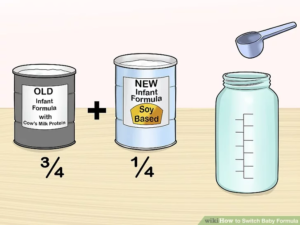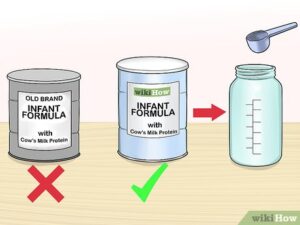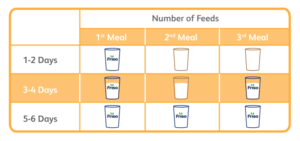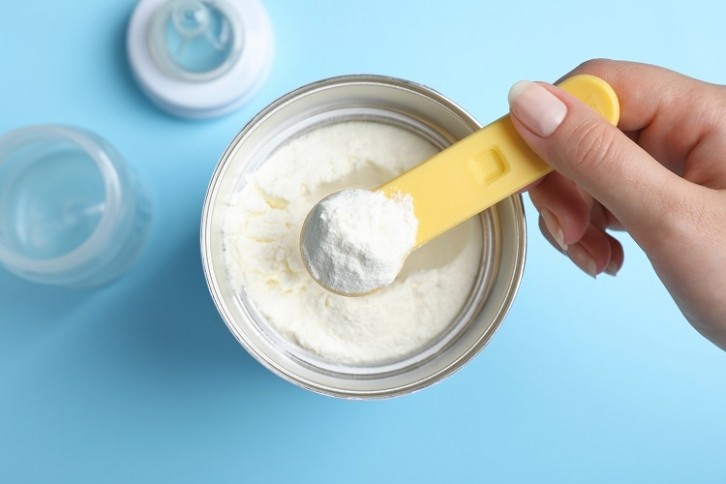Switching baby formula can be a daunting task, but it does not have to be. With a little planning and preparation, you can make the transition smoothly and minimize any discomfort for your baby.
Complete Guide: How to Switch Baby Formula
Why switch baby formula?
There are many reasons why parents may choose to switch baby formula. Some common reasons include:
- Allergy or intolerance
If your baby is allergic or intolerant to a particular formula, you will need to switch to a different formula that is safe for them.
- Nutritional needs
As your baby grows and develops, their nutritional needs may change. You may need to switch to a different formula that provides the nutrients they need at their current stage.
- Taste or texture
Some babies may simply prefer the taste or texture of another formula.

When to switch baby formula
The best time to switch baby formula is when your baby is healthy and thriving. If your baby is experiencing any feeding problems, such as gas, fussiness, or spit-up, it is important to talk to your pediatrician before switching formulas.
How to switch baby formula
There are a few different ways to switch baby formula. The best method for you will depend on your baby’s individual needs and preferences.
Method 1: The gradual approach

This is the most common approach to switching baby formula. It involves gradually mixing the new formula with the old formula over a period of several days. This helps to reduce the risk of any digestive upset.
To gradually switch baby formula, follow these steps:
- Start by mixing 1 part new formula with 3 parts old formula.
- Feed your baby this mixture for 2-3 days.
- Gradually increase the amount of new formula and decrease the amount of old formula each day.
- Once you are mixing equal parts new and old formula, you can start feeding your baby only the new formula.
Method 2: The cold turkey approach

This approach involves switching your baby to the new formula completely overnight. This method is generally not recommended, as it can increase the risk of digestive upset. However, it may be the best option for babies who are having severe allergic reactions to their current formula.
If you choose to use the cold turkey approach, follow these steps:
- Make sure that you have a few days’ worth of the new formula on hand.
- On the day of the switch, prepare a bottle of the new formula and feed it to your baby.
- Continue feeding your baby the new formula for the rest of the day and night.
Method 3: The mixed approach

This approach combines the gradual and cold turkey approaches. It involves switching your baby to the new formula over a period of several days, but you do not gradually increase the amount of new formula. Instead, you switch your baby to the new formula completely at the end of the transition period.
To use the mixed approach, follow these steps:
- Start by feeding your baby only the new formula for one meal per day.
- Continue feeding your baby only the new formula for one meal per day for several days.
- Once your baby is tolerating the new formula well, you can switch them to the new formula completely.
Tips for switching baby formula
Here are some tips for switching baby formula smoothly:
- Talk to your pediatrician. Before switching baby formula, it is important to talk to your pediatrician. They can help you choose the right formula for your baby and recommend the best way to switch.
- Be patient. It may take some time for your baby to adjust to the new formula. Be patient and don’t give up if your baby has some initial discomfort.
- Watch for signs of problems. If your baby experiences any feeding problems, such as gas, fussiness, or spit-up, talk to your pediatrician. They can help you troubleshoot the problem and determine if you need to switch formulas.
Troubleshooting common problems

Here are some common problems that parents may experience when switching baby formula and how to troubleshoot them:
- Digestive upset: If your baby experiences digestive upset, such as gas, fussiness, or spit-up, it is important to talk to your pediatrician. They can help you determine if the new formula is causing the problem and recommend a different formula.
- Feeding refusal: If your baby refuses to eat the new formula, try mixing it with the old formula in a gradually increasing ratio. You can also try warming the formula to your baby’s preferred temperature. If your baby still refuses to eat the new formula, talk to your pediatrician.
Conclusion
Switching baby formula can be a challenge, but it is important to remember that you are not alone. With a little planning and preparation, you can make the transition smoothly and minimize any discomfort for your baby.








